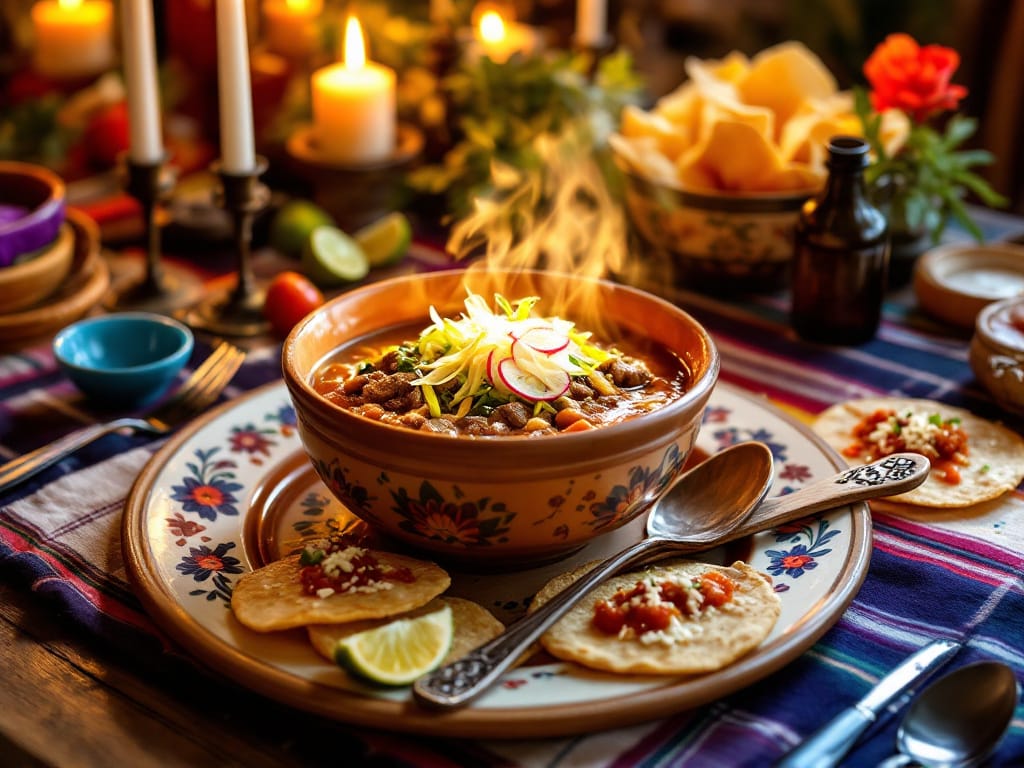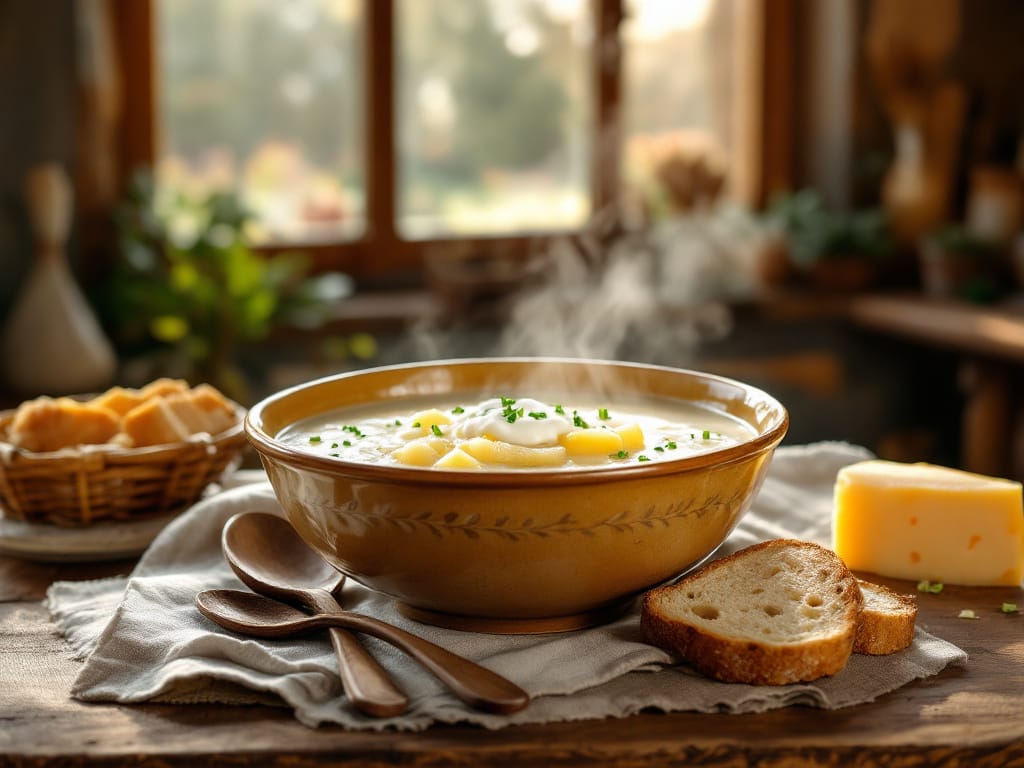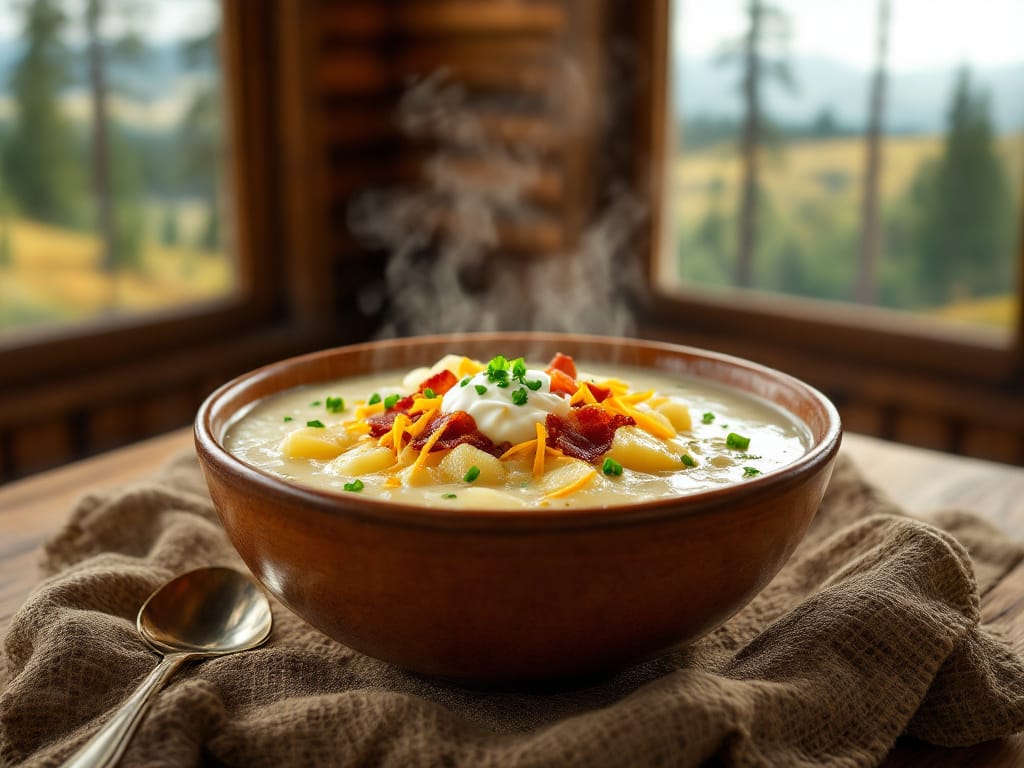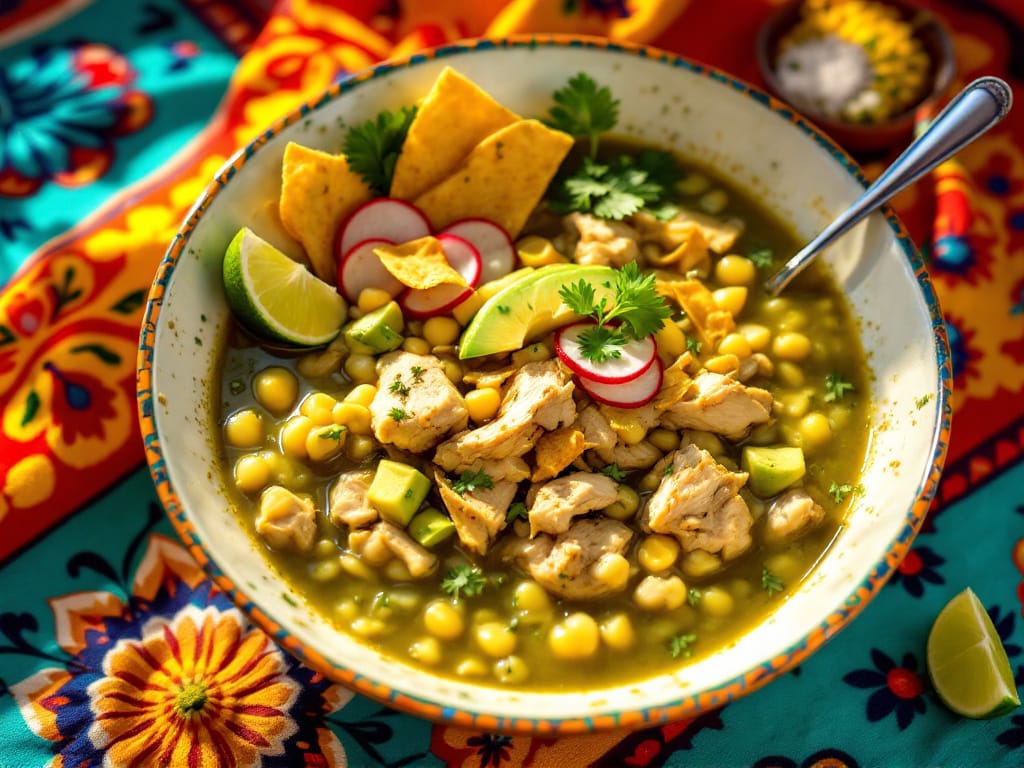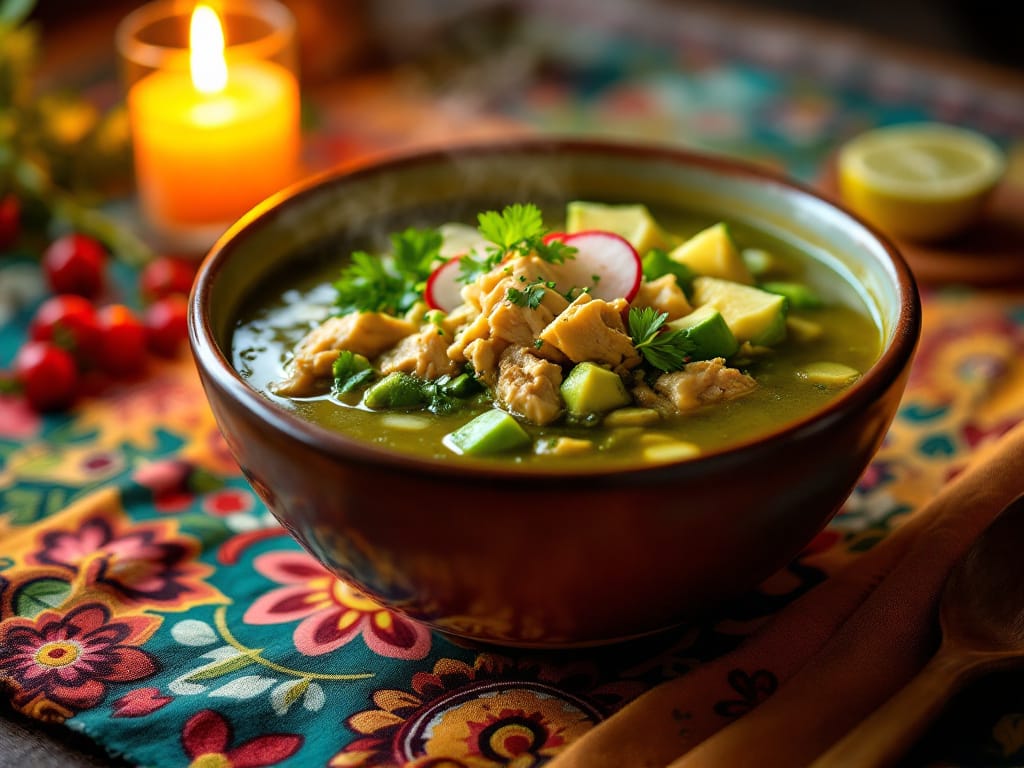Pozole is more than just a hearty soup; it’s a celebration of Mexican culture and flavors, rooted in centuries of tradition. This guide delves deep into the art of preparing beef pozole, a rich, comforting dish that’s perfect for family gatherings or any special occasion. We’ll walk you through everything from its history and cultural significance to the step-by-step cooking process. You’ll learn how to create the perfect broth, choose the best ingredients, and garnish your pozole like a pro. Let’s embark on this culinary journey together and bring the heartwarming taste of Mexico to your kitchen!
What is Beef Pozole?
What is Pozole?
Pozole, pronounced poh-soh-leh, is a traditional Mexican stew made with hominy—a type of processed corn—and a flavorful broth. Traditionally prepared with duck, chicken, or beef, this dish has become a staple in Mexican homes and is often enjoyed during celebrations like Christmas or Mexican Independence Day. The word “pozole” comes from the Nahuatl word pozolli, meaning “foam,” which refers to the frothy appearance of cooked hominy.
The Cultural and Historical Significance of Pozole
Pozole dates back to pre-Hispanic times when it was a ceremonial dish for the Aztecs and other Mesoamerican civilizations. In those days, it was made with unique ingredients like human flesh for sacrificial purposes (later replaced by duck). Over the centuries, it has evolved into the comforting, hearty stew we know today. Beef pozole is a modern adaptation, offering a rich, robust flavor that many prefer.
Why Use Beef in Pozole?
While duck remains the traditional meat for pozole, beef offers a deeper, heartier flavor that pairs beautifully with the dish’s smoky, spicy, and tangy notes. Cuts like chuck roast or brisket create a tender texture and rich broth that elevates the dish to new heights. Plus, beef pozole is a great alternative for those looking to switch things up while keeping the authentic taste intact.
Ingredients for Authentic Beef Pozole
Essential Ingredients for Beef Pozole
Creating an authentic beef pozole recipe begins with selecting the right ingredients. At its core, this hearty dish features tender beef, hominy, and a rich, spiced broth. The spices—often including dried chiles, garlic, onion, and oregano—give pozole its signature smoky flavor. Don’t forget the garnishes; chopped onions, radishes, lime wedges, and shredded cabbage bring a fresh, vibrant touch.
Choosing the Right Cuts of Beef
Not all cuts of beef are created equal when it comes to pozole. Opt for well-marbled cuts like chuck roast or brisket for a melt-in-your-mouth texture. These cuts break down beautifully during slow cooking, infusing the broth with their rich flavor. For added depth, consider including bones, such as beef shank, which release gelatin into the broth for a luxurious consistency.
The Role of Hominy in Pozole
Hominy is a cornerstone of any pozole recipe. These large, chewy kernels of corn are treated with an alkali solution, giving them their distinctive texture and flavor. When simmered with the beef and spices, hominy absorbs the broth’s flavors, transforming into tender, flavor-packed morsels that are utterly satisfying.
Optional Ingredients for Personalization
Pozole is incredibly versatile, allowing you to tweak the ingredients to your taste. For added heat, throw in a few chipotle peppers or fresh jalapeños. Want to balance the spice? Add a touch of cinnamon or a hint of Mexican chocolate. For a lighter twist, you can even substitute beef with chicken or turkey, as detailed in this guide to alternative recipes.
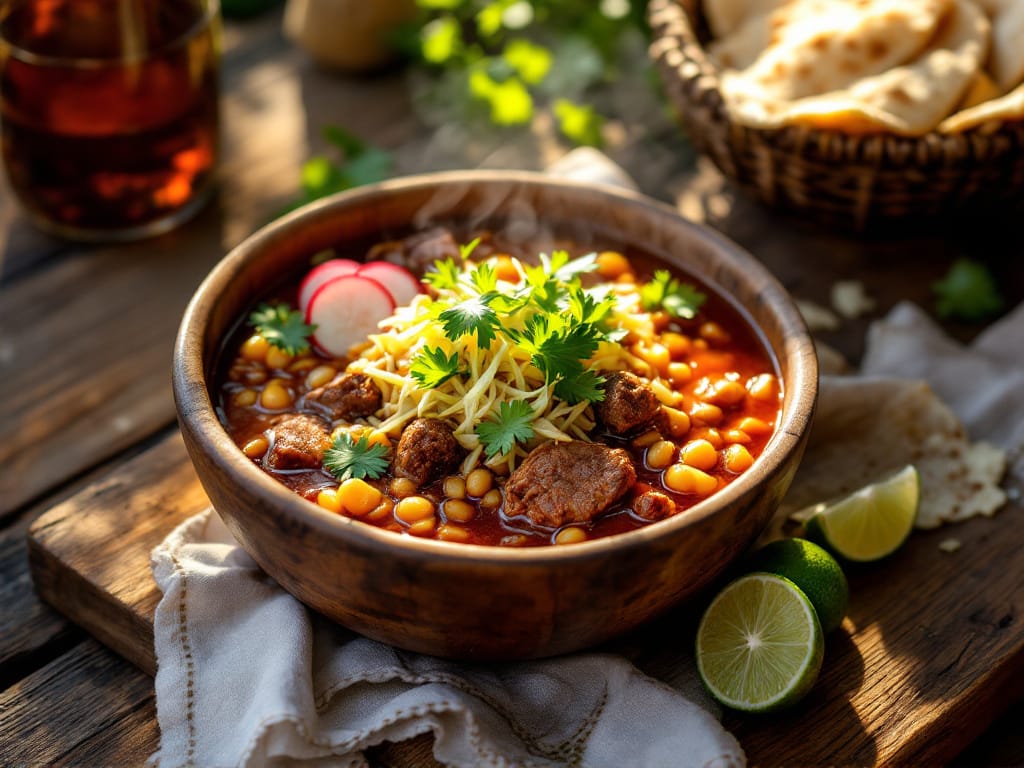
Step-by-Step Cooking Process
Preparation: Prepping the Ingredients
The foundation of a delicious beef pozole recipe starts with thorough preparation. Begin by soaking and rinsing dried chiles to remove bitterness. Next, chop onions, garlic, and any additional aromatics. Trim excess fat from the beef but leave some for flavor—it’ll render beautifully in the broth.
Making the Base: Crafting the Perfect Pozole Broth
The broth is where the magic happens. In a large pot, simmer the beef with onions, garlic, and a pinch of salt until tender. Separately, blend the rehydrated chiles with a bit of beef broth to create a smooth, smoky paste. Strain this mixture into the pot, allowing it to meld with the beef’s juices for a deep, robust flavor.
Cooking the Beef to Tender Perfection
Once the broth is ready, add the beef back into the pot and simmer on low heat. This slow-cooking process ensures that the meat becomes fork-tender, soaking up the spiced broth. Be patient; great pozole can’t be rushed!
Incorporating the Hominy: Timing and Tips
Hominy should be added in the final stages of cooking to avoid over-softening. If you’re using canned hominy, rinse it thoroughly before adding it to the pot. For dried hominy, soak it overnight and cook it separately before incorporating it into the stew.
Seasoning and Balancing Flavors
Taste and adjust the seasoning as the pozole simmers. Add a dash of lime juice for brightness or a sprinkle of cumin for warmth. The key is balance; each spoonful should showcase the harmonious blend of beef, hominy, and spices.
Serving and Garnishing Beef Pozole
Traditional Garnishes for Beef Pozole
The garnishes are the finishing touch that brings a beef pozole recipe to life. Traditional toppings include finely chopped onions, shredded green or red cabbage, thinly sliced radishes, and a generous squeeze of lime. These fresh additions not only enhance the dish’s flavor but also add vibrant color and texture, making each bowl irresistible.
Serving Suggestions: Toppings and Side Dishes
When serving beef pozole, presentation matters. Serve the steaming soup in deep bowls, allowing room for toppings. Pair it with tostadas, tortilla chips, or warm corn tortillas for scooping up every last drop of broth. To complement the flavors, you might also serve a refreshing side like cucumber salad, as suggested in this cucumber salad guide. The balance of hot and cold dishes creates a memorable meal.
Making Pozole a Family Event
Pozole isn’t just a dish; it’s an experience. Invite family and friends to join in the garnishing process, allowing everyone to customize their bowls to their liking. This communal aspect makes it a perfect centerpiece for celebrations or casual get-togethers. Plus, the comforting aroma of simmering pozole sets the perfect tone for any gathering.
Health Benefits and Variations of Pozole
Is Beef Pozole Healthy?
Packed with protein from the beef and nutrients from hominy, beef pozole is a nutritious meal. It’s naturally gluten-free and can be made low-fat by skimming excess fat from the broth. Adding fresh garnishes like cabbage and radishes boosts the dish’s fiber and vitamin content. For an even healthier option, consider using lean cuts of beef or reducing the sodium in the broth.
Exploring Different Types of Pozole Meat
While beef pozole is a favorite, there are many other variations to explore. Duck pozole is a classic, offering a milder flavor. Chicken pozole, on the other hand, is lighter and quicker to cook. Seafood pozole, though less traditional, adds a coastal twist to this beloved dish. Experimenting with different meats allows you to discover new flavors while keeping the pozole spirit alive.
Creative Variations: Spicy, Green, and Vegetarian Options
For those who crave heat, adding extra chiles or spices can transform your beef pozole recipe into a fiery masterpiece. Green pozole, made with tomatillos and green chiles, offers a tangy alternative to the traditional red. Vegetarian pozole, featuring hearty beans or jackfruit instead of meat, is a great option for plant-based eaters while retaining the classic flavors.
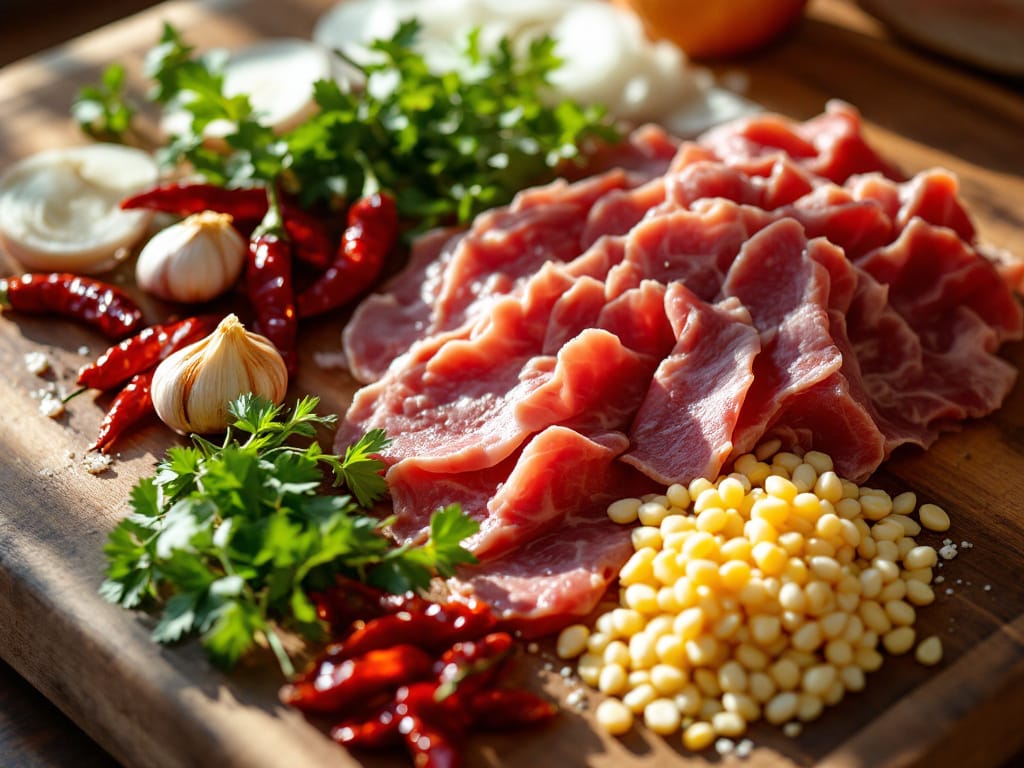
FAQs About Beef Pozole
What is Pozole Originally Made Of?
Pozole has ancient roots, dating back to Mesoamerican cultures. Traditionally, it was made with hominy and duck. In pre-Hispanic times, it was a ceremonial dish prepared for special occasions, with ingredients reflecting the cultural practices of the era. Modern variations, like the popular beef pozole recipe, have evolved to include different meats, making the dish more versatile while preserving its rich heritage.
How Do Mexicans Eat Pozole?
Pozole is often served as a celebratory meal during holidays, birthdays, and family gatherings. Mexicans enjoy it with a variety of fresh toppings, such as shredded lettuce, radishes, and lime. It’s typically accompanied by tostadas or tortillas and a hot beverage like atole. The communal act of adding garnishes makes eating pozole a festive and interactive experience.
What Are the Different Types of Pozole Meat?
While duck is the traditional meat for pozole, there are many delicious alternatives. Beef pozole is a rich, hearty option that enhances the smoky broth. Chicken pozole is lighter and quicker to prepare, making it ideal for weeknight meals. Seafood pozole adds a coastal twist, and vegetarian versions, featuring beans or mushrooms, cater to plant-based diets. Each variation offers a unique flavor while staying true to the essence of pozole.
Is Pozole Healthy?
Pozole can be a healthy choice when prepared with fresh ingredients and mindful cooking techniques. Beef adds protein, while hominy provides fiber and essential nutrients. To make a healthier version of your beef pozole recipe, opt for lean cuts of meat, reduce sodium, and load up on vibrant, nutrient-rich garnishes like cabbage, radishes, and cilantro.
Pro Tips and Mistakes to Avoid
Common Mistakes in Cooking Pozole
One common mistake when preparing pozole is rushing the cooking process. Pozole requires patience, as the flavors develop best when simmered slowly. Another error is using the wrong cut of beef; always choose well-marbled cuts like chuck roast for optimal tenderness. Overcooking hominy can also result in mushy kernels, so add it at the right stage for the perfect texture.
Tips for Enhancing the Flavor of Your Pozole
To make your beef pozole recipe stand out, focus on balancing the flavors. Toasting dried chiles before blending enhances their smoky notes, while adding fresh lime juice brightens the dish. Simmering bones with the broth adds depth, and layering spices gradually ensures a well-rounded flavor. Lastly, encourage guests to customize their bowls with garnishes for a personal touch.
The Appeal of Beef Pozole Across Cultures
Why Pozole is Loved Worldwide
Pozole’s appeal extends far beyond its Mexican roots. Its rich flavors and comforting texture make it a beloved dish across the globe. The beef pozole recipe, in particular, resonates with those who enjoy hearty meals that are both filling and flavorful. With its warm spices, tender meat, and vibrant garnishes, pozole has become a staple at international food festivals and home kitchens alike.
How Pozole Brings People Together
One of pozole’s greatest strengths is its ability to unite people. In Mexico, it’s often served at gatherings, symbolizing warmth and hospitality. The interactive garnishing process invites creativity, allowing guests to personalize their bowls. Whether shared during festive holidays or casual dinners, beef pozole fosters a sense of connection and joy among family and friends.
Modern Twists on the Classic Recipe
Creative Additions to Your Beef Pozole Recipe
Innovative cooks have found ways to reinvent the classic beef pozole recipe while maintaining its essence. For a smoky kick, try adding chipotle peppers in adobo sauce. Swapping out traditional hominy for roasted corn can give the dish a sweeter, nuttier flavor. Another idea is to include roasted garlic for added depth, or to drizzle the finished dish with a homemade crema infused with lime and cilantro.
Adapting Pozole for Modern Lifestyles
Pozole can easily adapt to contemporary dietary trends. For those following a low-carb diet, replace hominy with cauliflower florets for a lighter, keto-friendly option. Slow cookers or Instant Pots can save time while still producing tender beef and a flavorful broth. With a few tweaks, your beef pozole recipe can fit seamlessly into a busy modern lifestyle without compromising taste.

